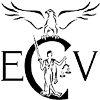Staubgeschütztes Arbeiten mit Containments − Konzepte und Prüfung Dr. Lothar Gail Wiesbaden Korrespondenz: Dr. Lothar Gail, Humboldtstr. 32, 65189 Wiesbaden (Germany) Dust-protected Workplaces in Containments − Concepts and Evaluation Areas in which highly potent agents are released as airborne dust, can be isolated from the environment by using rigid walls and specific airflow concepts. Modern airflow concepts enable the design of protective functions according to process requirements. Airflow simulation is used to simulate and optimize the protective effect of entire rooms. A wide range of methods for testing the protective effect is available, from leak detection via total dust measurement up to the analytical detection of active agents in inhalable dusts. These techniques allow quantitative and reproducible determinations and monitoring of the protective effect of containments. Key words Containment- Leckbestimmung • Hochwirksame Stoffe • Luftgetragener Staub • Luftströmungskonzepte • Schutzfunktionen • Strömungssimulation |
|
|
pharmind 2006, Nr. 6, Seite 774




